Kia rio 2 problems. Weaknesses of Kia Rio
The machine-building industry has replenished with another comprehensively successful representative of Korean manufacturers - Kia car Rio. Engineers announced the positive characteristics of all components and assemblies of the model, unique design solutions for the body and interior. At the same time, the operation of the vehicle on the roads of the country showed whether the car was really flawless. A number of shortcomings have been identified, the severity of which can be judged from the following.
We note right away: in this model, the balance of price and quality is fully observed.
Assembly technology flaws
Development appearance was carried out under the supervision of Peter Schreier, Director of the Hyandai Motor Design Center. Added elements specific to sports fast cars. However, the quality of the materials used and the body assembly technology revealed the following disadvantages of the Kia Rio:
- isolation of sounds from the outside is insufficient. Everything that happens on the street, including the noise of the engine and wheel tires, is clearly audible in the cabin. Passing the speed mark of 100 km / h is associated with an exacerbation of sound sensations (additional insulation is required);
- a plastic engine crankcase protection is installed on the bottom of the car, which can hardly be effective on a road with difficult terrain or poor-quality coverage (replacement with a metal one is required);
- the radiator grill does not provide sufficient protection for the device at high speeds. Cells have unnecessarily big size(solved by installing an additional fine mesh);
- connections of the dashboard, gearbox trim and rear window panel allow the appearance of mechanical squeaks and cricket sounds when the car is moving;
- the quality of the dashboard plastic and other elements is not very high. This is evidenced by the appearance of small cracks on the panel near the radio, the appearance of scratches at low loads;
- door hinges are affected external environment. To avoid squeaks, constant lubrication is required;
- the steering wheel of the car is not adjustable for reach;
- the driver's armrest is excessively shifted back and does not perform the function of support when driving;
- opinions about the convenience of the rear seats are contradictory and individual, uncomfortable placement of three people is noted, the distance to the roof is insufficient;
- there is no backlight for controlling the position of the power windows;
- button on-board computer located in a place invisible to the driver, you can find it only by looking away from the road or by touch;
- the display of the radio is difficult to see due to the low contrast;
- the outer paintwork is thin and not strong enough, with slight contact with shrubs, traces remain that require polishing.
Heating system flaws
In the operation of the interior heating and air conditioning system of the Kia Rio, the minuses were also noted by the owners of the cars.
At positive temperatures of more than thirty-five degrees and the open sun, the air conditioner does not constantly provide coolness in the cabin. With the above parameters, the engine power is slightly reduced. And the operation in winter time leads to slow heating of the cabin. To avoid discomfort, as well as to cope with the lack of step adjustment, you must turn off the seat heating yourself. As a disadvantage, the excessive noise of the operating fan is also noted.
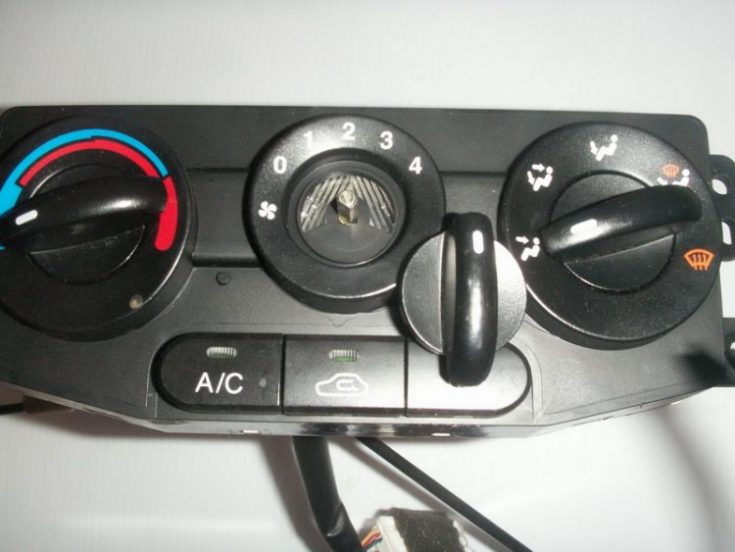
Characteristics of work nodes
There are basically no weaknesses in the Kia Rio in the functioning of the engine and gearbox. However, it is noted that in individual cases at maximum negative temperatures, when the device warms up, idle speed does not drop below 1300 and is accompanied by significant engine noise. If it is not warm enough, then the first gear is turned on with difficulty.
To use the manual transmission handle, you need to get used to its operation, especially to shifting from a direct (5) gear to a lower gear and activating reverse gear (you need to lift the ring under the handle, and then move the lever to the front left position).
Acceleration of the car after 110 km / h occurs with some delay and not fast enough.
The car's suspension is stiff, which causes certain complaints from drivers when driving in conditions of significant bumps on the roads. When the permissible mass of the vehicle was exceeded, an insignificant loss of acceleration dynamics and controllability was noted.
Flaws Kia Rio in the operation of the brake system were not detected. But it is important to consider that the braking distance is much longer when trying to stop on cold pads (cold season).
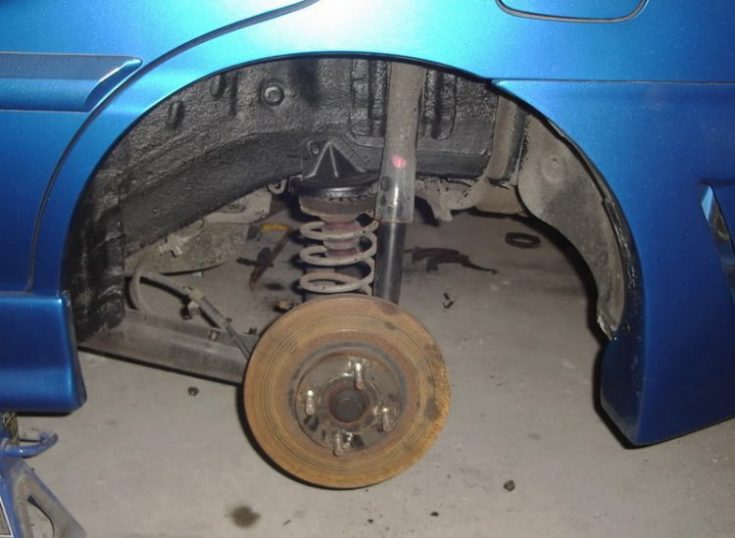
Particular attention should be paid to the fact that the above advantages and disadvantages are not of a general nature and are private impressions of the owners, and their occurrence is determined by many factors, including the attitude to the timely maintenance of the car, the driving experience of a particular driver, the prevailing climatic conditions operation.
Conclusion
The pros and cons of Kia Rio can be found by reading a lot of materials in different sources, but their objectivity often raises some doubts about impartiality. Only personal feelings and impressions from the operation of this car model can give a correct assessment.
Is one of the smallest cars in the company's lineup Kia Motors. In addition, it is very economical, and, due to its low cost, is one of the most interesting options among city cars in the secondary market. But, as they say, not everything that glitters is gold”, therefore, today we will try to find out what shortcomings were identified during the operation of the Kia Rio 2, and what to look for when buying this car in a used version.
A bit of history:
For the first time, Kia Rio debuted at the Geneva Auto Show in 2000. The car belongs to class "B" and was produced in two body types - sedan and hatchback. Kia Rio is significantly larger than its predecessor ( Kia Avella) and, in fact, is an analogue of the Hyundai Accent. In 2005, the Kia Rio 2 was presented to the general public; this version differed from its predecessor in a more modern exterior and interior design. In addition to external and internal changes, there were also technical improvements. So, for example, two gasoline engines added 100 cubes in volume. The car was built on a completely new platform, which was used not only by Kia, but also by Hyundai.
Like the previous generation, the Kia Rio 2 is only available in two body types - a sedan and a hatchback. In 2009, the car was restyled, which took place under the guidance of the famous German designer Peter Schreyer, who adorned the facade of the now popular model, “ tiger smile". In January 2011, Kia presented sketches of the third generation of the model, and in March of the same year, the official premiere took place at the Geneva Motor Show. The novelty was built on the same platform with Hyundai i20 And .
Advantages and disadvantages of Kia Rio 2 with mileage
The paintwork is quite thin, because of this, scratches and chips appear in the first years of operation of the car. Despite this, the body resists the onslaught of the red disease well, but, nevertheless, if you do not monitor the cosmetic condition of the body, you will not be able to avoid corrosion ( the body begins to bloom in places of chips). Also, corrosion can appear on the doors at the points of contact of the doors with the seal, the front of the hood and at the junction of the bumper with the car body.
Engines
In the CIS it was presented only with gasoline power units - 1.4 (97 hp), 1.6 (112 hp)). Also, in the secondary market you can find diesel versions of cars with a motor. 1.5 (110 HP) imported from Europe. Speaking of reliability power units in general, no serious shortcomings have been identified in these engines. The most common problems are floating speed and difficult engine starting. Most owners, faced with these problems, begin to change candles, high-voltage wires, wash nozzles, but, as a rule, this does not give any effect, since the cause of this ailment lies in a software failure in the engine control unit ( flashing required). It is worth noting that on some instances the new firmware may not fit the old control unit, in such cases the owners had to change the control unit.
The original battery also received a lot of criticism, the fact is that it is very weak and with the advent of winter its power was not enough to start the engine. The problem is solved by replacing the battery with a more powerful one. Sometimes, the reason that the machine does not start in hard frost, is not a battery, but a frozen starter. At every THAT be sure to check the coolant level, the fact is that the radiator is not durable and, over time, begins to leak. If this is not taken care of, the engine can suffer thermal shock, which usually leads to serious consequences. A corrugation is installed in the exhaust manifold, which connects the manifold to the resonator. The problem is that it frays quickly enough, and the air that has penetrated into it confuses the oxygen sensor. If a problem occurs, fuel consumption increases, and the indicator on the dashboard lights up. check engine". Owners of cars with a 1.6 engine most often complain about the short resource of ignition coils. 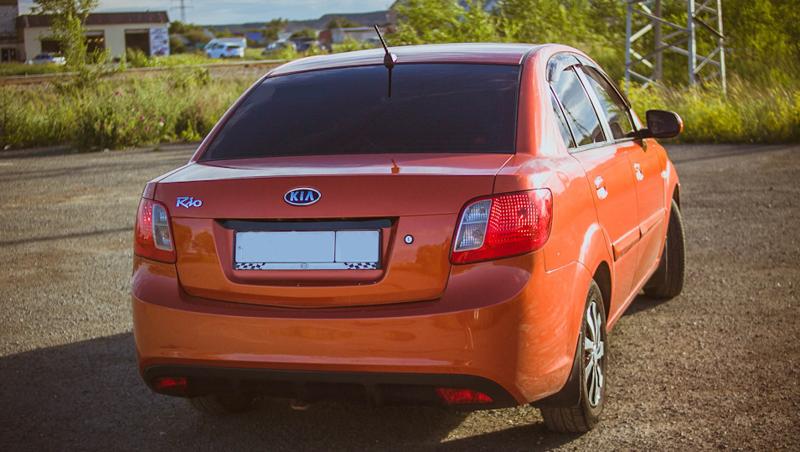
Transmission
It was completed with two types of transmission - a five-speed mechanics and a four-speed automatic transmission gears. There are practically no complaints about the mechanics. In rare cases, after 100,000 km, the owners had to change the input shaft seals. And, here, the clutch fails quite early, there were cases when it had to be changed after 30,000 km, but such cases are rare, basically, the clutch runs 50-80 thousand km. In the automatic transmission, as in the mechanics, no serious shortcomings were identified. This gearbox is demanding on the quality of service, and if these requirements are neglected, then, over time, the box will begin to “kick” when shifting gears. Choosing a car with automatic transmission you need to take into account the peculiarity of its work - at the beginning of the movement, the car has good acceleration dynamics, but, with an increase in speed, it goes out ( on a car with mechanics, the deterioration in dynamics is not so noticeable).
Features and disadvantages of running Kia Rio 2
The car is equipped with a semi-independent suspension: in front - Macpherson, behind - beam. Kia Rio 2 received the most criticism for the stiffness of the suspension, but it is worth noting that thanks to such settings, the car is well controlled. Many owners have managed to make the car more comfortable after replacing the original shock absorbers with softer ones. If we talk about the reliability of the chassis, then, in general, it can be called reliable, even despite the fact that some of its elements have a smaller resource than those of competitors. Traditionally, for most modern cars, stabilizer struts and bushings are considered consumables and change every 20-30 thousand km. Also, the knuckle is considered one of the weak points, it is made of soft metal and bends in the area of \u200b\u200bthe shock absorber, even with slight contact with the curb or not careful driving through a speed bump.
In the rear of the car, already after 40,000 km, anthers or shock absorber bumpers may begin to rattle, and closer to 60,000 km, the rear shock absorbers may begin to leak. Wheel bearings, tie rod ends and ball bearings, with careful operation, go up to 80,000 km. front shock absorbers, thrust bearings and steering rods are able to serve 120-150 thousand km. Silent blocks and levers, in most cases, live more than 150,000 km. The steering mechanism is prone to knocking when driving, abundant lubrication of the splines or replacing the plastic bushings of the rack helps to fix the problem ( as a rule, the right sleeve breaks first). Otherwise, there are no complaints about the resource of steering parts and the brake system.
Salon
Salon Kia Rio 2 is not distinguished by exquisite finishing materials and interesting design solutions, everything here is very simple and cheap. The car cannot boast of silence in the cabin, there are plenty of extraneous sounds - squeaks, knocks and squeaks are an integral attribute of the cabin. In hatchback cars, over time, the fastenings of the rear sofa are loosened, because of this, a roar is heard from the rear of the cabin, which many owners mistakenly take for malfunctions in the suspension. Among the shortcomings in the electrician, failures in the operation of the climate control control unit can be distinguished. The problem is unpleasant in that it has a floating character, for example, the system does not work on the road, but as soon as you get to the service, the problem disappears by itself. Also, it is worth noting the small resource of the power window control buttons, heated windows, etc. 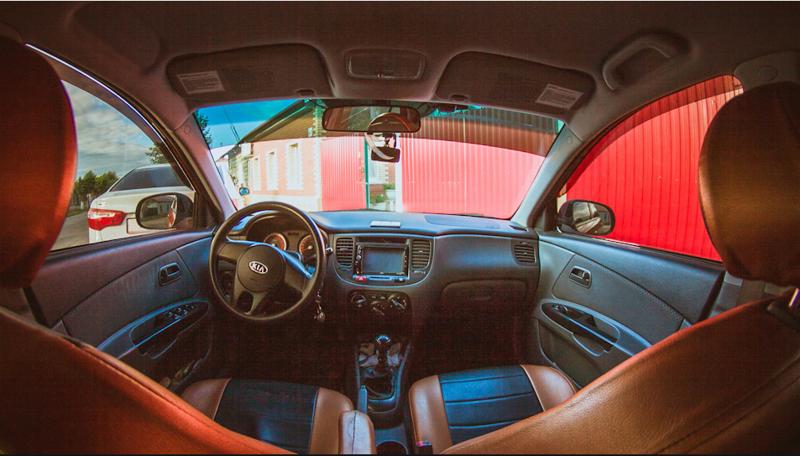
Outcome:
Kia Rio 2 has established itself as a reliable and unpretentious car. If we talk about which assembly ( Russia or Korea) it is better to give preference, then, it should be noted that they are not much different from each other, and have almost the same problems, and, with proper maintenance, car ownership will be quite budgetary.
Kia Rio with mileage: main faults and weaknesses
According to statistics, Kia Rio occupies a leading position in the Russian car market. A lot of these cars are sold on the "secondary". We will tell you what to look for when buying a used Rio, and Isnext.ru specialists will tell you the cost of the most popular spare parts for this model and how much you can save using non-original parts
text: Oleg Slavin / 06/19/2017
Well, statistics are serious business. However, even without the work of analytical and statistical agencies, it is clear that the Kia Rio is indeed a very popular car in the metropolitan regions. It is enough to take a closer look at the traffic flow, and you can easily isolate this memorable silhouette at almost any intersection. Third in a row Generation Kia Rio started in 2011, and in 2015 the model was restyled. For our market, the car is produced at the Hyundai plant in St. Petersburg. The car is available in two body styles - a sedan and a hatchback and has two engines to choose from - 107 and 123 horsepower, and can also be aggregated with either a manual or automatic transmission.
Even in the initial configuration, the car is well equipped with various options and security systems. Plus, it's quite spacious and comfortable. Don't discount the inexpensive service maintenance and spare parts, as well as a developed dealer network. All this became the basis for such an ardent love of our motorists for this model. However, with all the advantages that the model undoubtedly has, it also has disadvantages that I would like to mention. And first of all, it will be useful to know this for those who decide to take this car not from a car dealership, but from their hands. So what do you need to be prepared for?
PLUSES AND MINUSES OF THE BODY
This one of the most expensive parts of the car is well prepared for our realities: the places most susceptible to corrosion are galvanized.
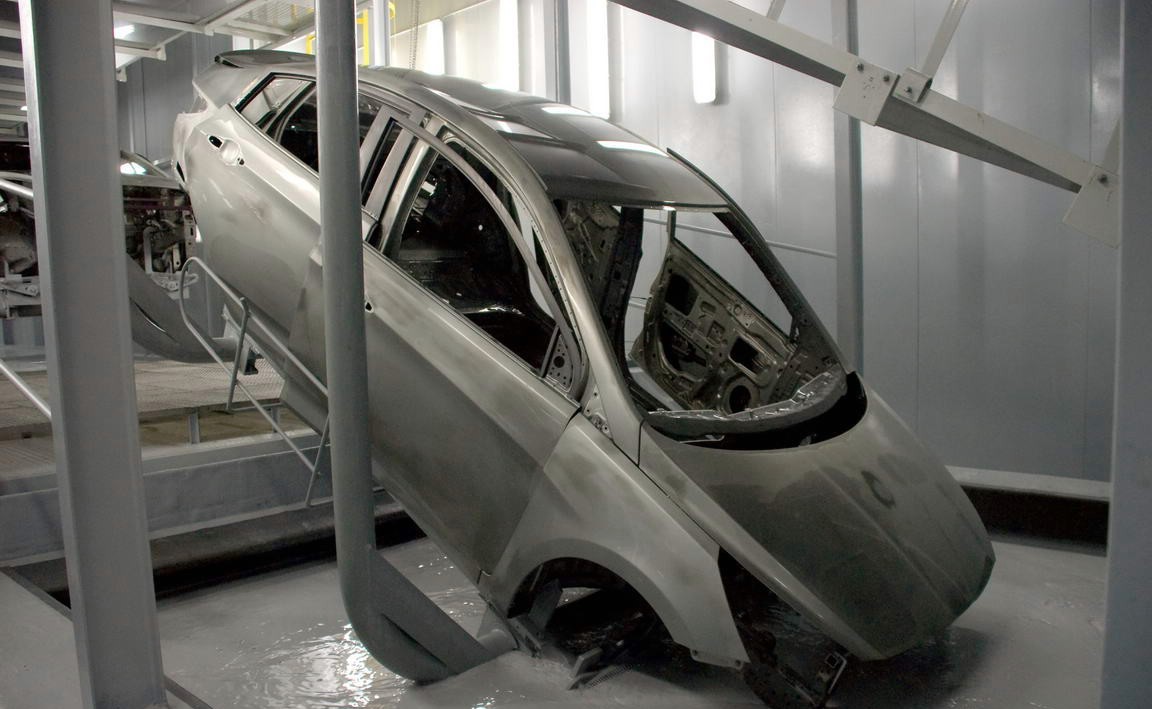
And on those elements of the body where it is not, “bugs” may appear by 20-30 thousand mileage. We are talking about the racks and the roof. This is due to the fact that the paintwork of the car is thin, chips are quickly formed on it, and, as a result, corrosion occurs. It is also worth mentioning It, alas, does not have sufficient resistance to abrasion, and therefore it becomes cloudy pretty soon: as a rule, it has to be changed by 50 thousand mileage, and given that it is heated, then this pleasure is not cheap. Only the work will cost about 4,000 rubles, and in total everything will cost 29,000 rubles. Many owners note that already on early runs there are problems with the driver's door - it does not close well. Adjustment , of course, solves this problem, however, after a certain time, the door starts acting up again. Not everyone is happy with the sound insulation of the cabin, especially the wheel arches. Many note the appearance of "crickets". Noise is usually emitted by the instrument panel.
ENGINE AND TRANSMISSION
As a rule, there are no complaints about the engines themselves: both 107- and 123-horsepower are quite reliable and unpretentious in operation. Rarely, but there are cars with a current rear . Mostly this happens at a run of 30,000 km. By the way, replacement work rear oil seal on cars with a manual gearbox it costs about 4,500 rubles, and with an automatic transmission - already 7,000 rubles. Plus the cost of the gland itself is an average of 1000 rubles. In total, the entire repair will result in 5500-8000 rubles.
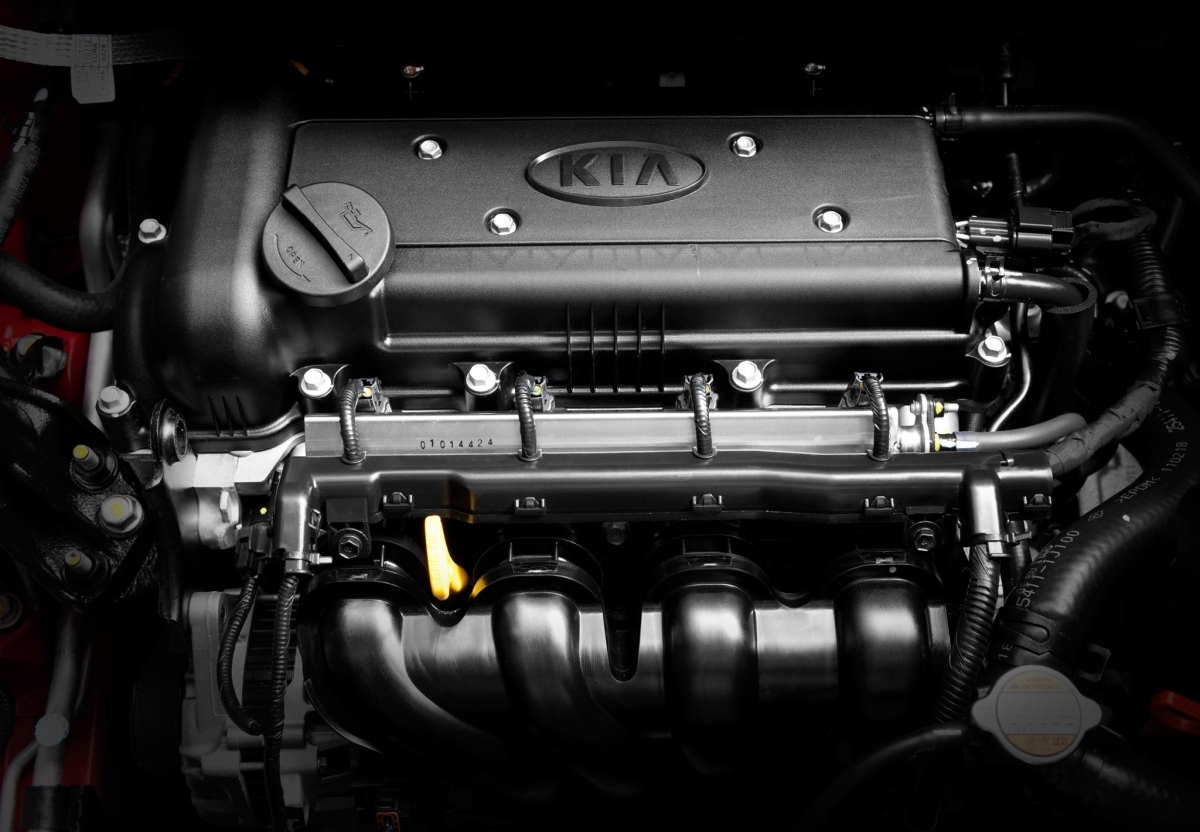
Not everyone is happy with fuel consumption and note that in the city it can reach up to 11.5 liters per hundred mileage, but it rather depends on the driving style. The design flaws include a quick failure He is clearly not ready for long work on our fuel. So, when buying a car from your hands, check with the owner if the catalyst has changed, and if so, to an analogue or a flame arrester. For the full operation of the engine with the latter, it is worth putting snags for sensors. The cost of replacement work varies from 1500 to 3000 rubles, depending on the greed of the car service. We add the cost of the catalyst to 60,000 rubles and get 63,000 rubles for the entire repair.
The owners usually have no complaints about the automatic transmission, but those who took the car on the “handle” often complain about the poor selectivity of the 6-speed gearbox: sometimes it’s not easy to get into the right gear. In addition, many note the lack of a sixth gear on cars with a 1.4 engine as a drawback - with it the car would be more economical and quieter.
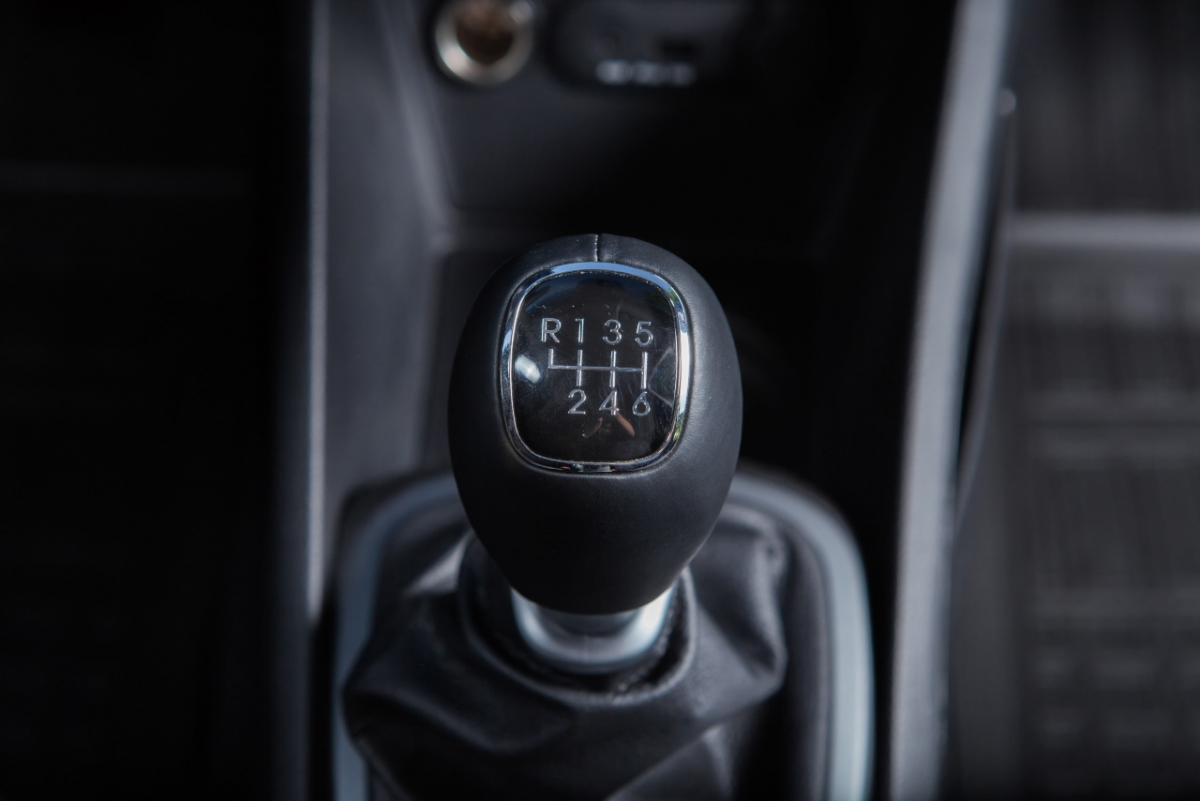
In addition, many note the lack of a sixth gear on cars with a 1.4 engine as a disadvantage - with it the car would be more economical and quieter
SUSPENSION AND STEERING FEATURES
A rather stiff suspension adversely affects the reliability of the front . And if in the capital regions there are practically no complaints about their durability, then those who live in the provinces have to change them almost every 40-50 thousand runs. This “pleasure” costs about 1,500 rubles per wheel, and the same amount will have to be paid for the bearing itself. For the same reason, it fails pretty soon. (replacement of bushings will cost 1000 rubles plus bushings of 200 rubles each). And the racks themselves on bad roads live no more than 30 thousand mileage. However, solving these problems is not as costly as repairing , which can happen already on a run of 60–70 thousand km. Repairing a steering shaft bearing or rack bushings is quite expensive. Installation / dismantling of the rail will cost about 2,500 rubles, and another 3,500 rubles will have to be paid for the repair itself. If you take a new rail, then everything together (spare part plus work) will cost 30,000 rubles.
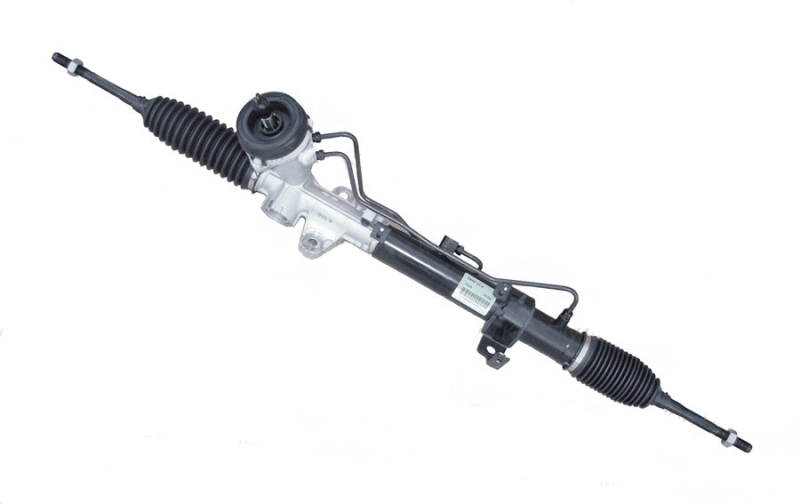
Sometimes a knock is mistaken for the knock of the steering rack which is much cheaper to treat. However, he himself costs an average of 8,000 rubles, plus the replacement work will cost at least 2,000 rubles, total, whatever one may say, 10,000 rubles. In addition, many car owners note that the car is moving away from a straight path, which is due to the need to periodically adjust the camber and toe-in settings. This service costs around 1400-1800 rubles.
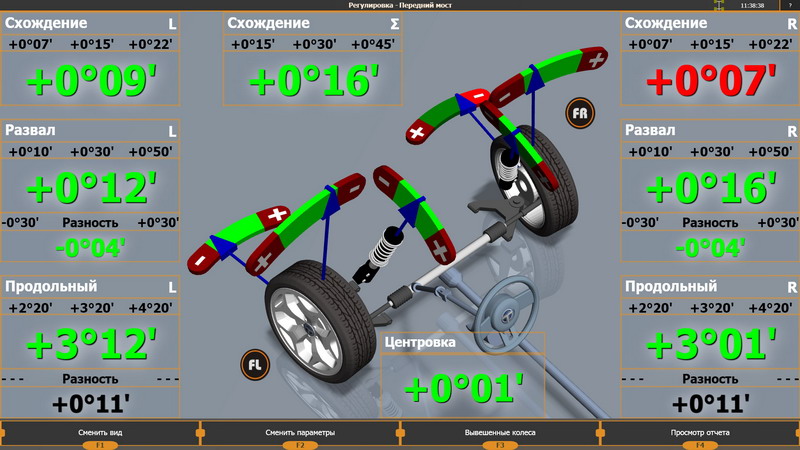
Bad roads quickly knock down the set parameters, and therefore Kia Rio is a frequent guest at the wheel alignment adjustment stands. Sometimes the reason for the withdrawal of the car is also a malfunction of the hydraulic booster. If the rotation of the steering wheel in one direction is easier than in the other, this is exactly the case.
ELECTRIC
The main claims on this item from the owners of Kia Rio are the head lighting. Disappearing contacts of direction indicator lamps, inadequate response of head lighting to commands : The low beam lights up instead of the turn signal. Replacing the steering column switch in a specialized workshop will cost 1500–2000 rubles. By contacting a garage service, where prices are an order of magnitude lower, you can save by paying 4,000 rubles for the switch itself and 500–700 rubles for a replacement.
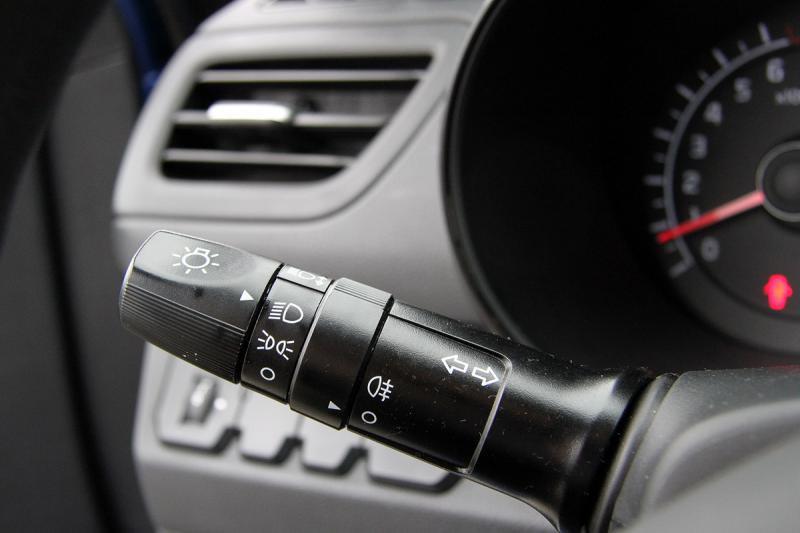
The cause of these defects is sometimes an illiterate installation. additional equipment. So before sinning on design flaws, contact the alarm installers. It is they who sometimes force the car's electrician to work in a different way than it was planned in the design bureau. But quickly fading elements of seat heating - this is just the problem laid down by the designers. They work properly only the first two or three winters. It happens that they do not work properly and . You can close or open the glass only after it has taken extreme points. It is not difficult to change it yourself, but if your hands are not sharpened for such work, then it is better to entrust this matter to a professional. The master will ask for about 1,000 rubles for the work, and another 3,000 rubles will need to be paid for the window regulator itself.
MAINTENANCE
Scheduled maintenance on the Kia Rio is performed every 15,000 km or every 12 months, whichever comes first. From consumables for maintenance, filters and spark plugs are replaced. And filters need to be changed at every maintenance, and And , like , - according to the regulations prescribed in the operating instructions for the car. You may also need the front ones (the rear ones live much longer), and with high mileage, get ready to change more And.
A complete maintenance will cost, if you do it yourself, at about 3,700 rubles, taking into account the cost of oil, filters and spark plugs. A set of front pads will cost 1000–5700 rubles, depending on whether you use original spare parts or their equivalent. A set of front discs will cost 2000-9000 rubles.
CONCLUSION
Of course, Kia Rio has problems, but they are usually not critical. There are instances in which, even after a run of 70,000 km, none of these malfunctions were noticed. So, in general, this car can be considered quite reliable and worth the money. The day is not far off when the fourth generation of the model will appear on the roads. And what it will be, time will tell.
From the favorite of the market - and the demand is greater. Judging by the stable sales figures, the car should not bring catastrophic problems. And yet - what surprises can (or could) bring to its owners the Rio of the third generation? Traditionally, official dealers and one of the owners of the car help us to understand the medical history.
Knock steering rack
Many owners of Kia Rio complained about the noisy operation of the suspension, which pestered, among other things, due to poor sound insulation (by the way, after restyling, acoustic comfort has noticeably increased). "It's like riding a tram," some of the owners cursed. Of course, you can’t attribute such a nuisance to the category of chronic malfunctions - besides, everything is relative, and many Rio owners were ready to put up with the existing noise.
However, among the noises coming from under the wheels, one unpleasant knock stood out, which arose when the steering wheel was turned and already promised serious problems. It came from the steering rack, and the reason, as the officials say, was too big gap between the individual parts of the rail and a poor-quality bushing. For individual batches of cars, the manufacturer issued technical bulletins, and the owners of the "rattling" Kia Rio could fix the problem for free. On already produced cars, the problem was eliminated with the help of repair kits, and after 2012, the design of the steering rack was finalized to eliminate the appearance of knocks.
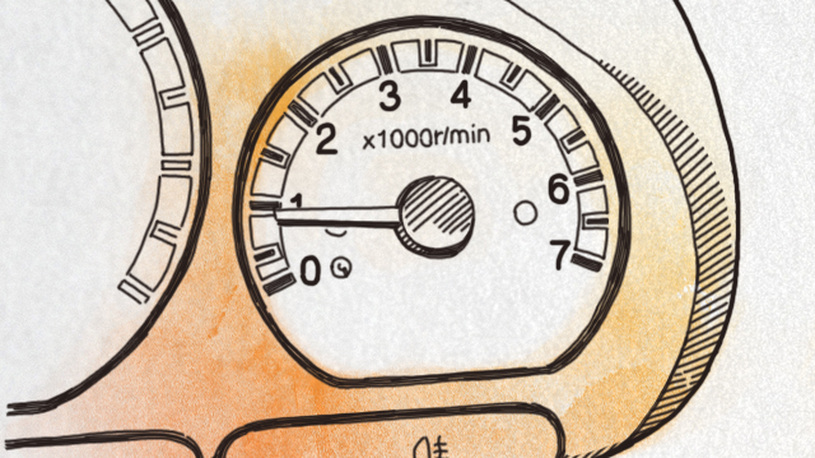
floating speed idle move
Gasoline engines of 1.4 and 1.6 liters, which are installed on the Kia Rio, do not bring large-scale troubles - the car drives with them cheerfully, reliably and without problems. But it stands still - already with problems: many owners of pre-styling cars complained about floating idle speeds. Of course, in most cases, both the owners themselves and official dealers were in a hurry to blame bad gasoline - however, often changing the "supplier" of fuel did not solve the problem. "Engine operation on a number of Kia cars Rio, released between 2012 and 2014, could be unstable on idling, which was associated with incorrect software of the engine control unit, - they said in one of the dealerships - The manufacturer organized a service campaign, in which cars with certain versions of the unit were updated to change the control logic of the unit. Since 2014 a new version software began to be installed on cars from the factory. "It is worth noting that this was true for engines with a volume of both 1.4 liters and 1.6 liters.
However, you should not forget about low-quality fuel. As mechanics shared, Kia Rio engines are quite sensitive to gasoline, so floating speed may well return to normal after switching to better fuel, flushing throttle valve and changing spark plugs.
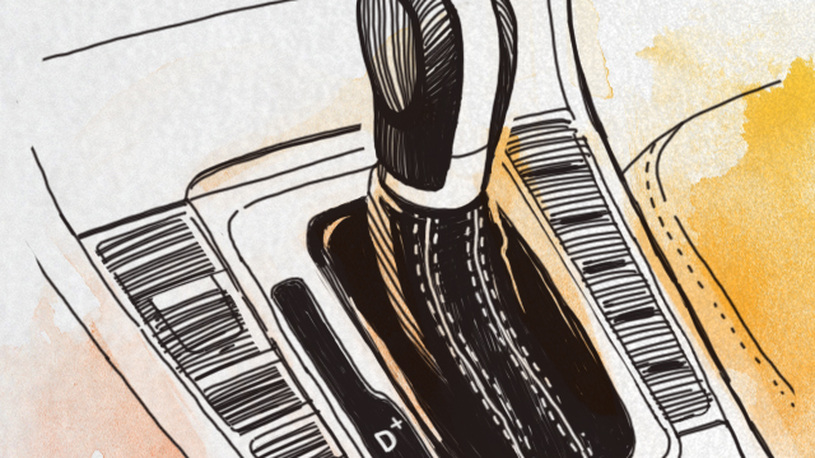
Rough work of the automatic box
There is another problem with Rio's "brains" that our friend also faced - only this time we are talking no longer about the engine, but about the gearbox. “In traffic jams, it happened, I almost felt sick, even while driving. I just wanted to take it, get out on the go - and take the subway. And let the car get home with such behavior,” recalls Alexander, who had experience in owning 1. -liter Rio on the machine. According to the reviews of the owners, the four-speed automatic on this model does not differ in "polite" manners at all - someone is frightened by an overly rude inclusion reverse gear, someone is not satisfied with kicks between gears in the "drive". As they said at the dealership, they are also sometimes addressed with complaints about the operation of the box, and the manufacturer has already introduced some adjustments to the program of the box control unit. A number of cars (depending on the firmware version) produced in 2012-2014 were subject to a free software update procedure for the gearbox control unit - in particular, the new firmware helped to eliminate the push when switching between first and second gears. After 2014, the new firmware version began to be used directly in the block production process. According to the dealer, after this procedure, many Rio owners noted positive changes in the operation of the machine - the gears began to switch more smoothly.
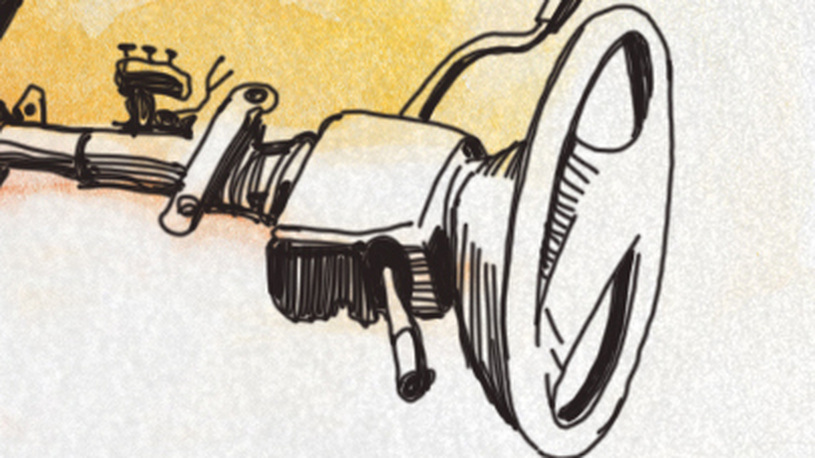
Steering wheel peeling off
Yes, and again this steering wheel. Practice shows that the fragility of the skin of young leatherette upsets the owners of many cars in the mass segment - even within the framework of our rubric, such a "sore" has occurred more than once: for example, in the Chevrolet Cruze and Peugeot 408. She did not bypass today's hero either. “We must not forget that the durability of the steering wheel upholstery depends on how you steer,” the dealership noted. “Many drivers hold the steering wheel with one hand, and at low speeds they even maneuver by turning the steering wheel with their palms — of course, this way it wears out much faster ". However, this is not an attempt to evade responsibility on the part of the dealer and the manufacturer - Kia recognizes the depressingly low reliability of the steering wheel braid. "To eliminate the problem, a technical bulletin was issued, according to which, at the request of the client, the steering wheel braid was changed by subcontract, in a specialized workshop, at the expense of the manufacturer," the dealer center said, adding that the material for the braid was chosen to be more durable, and in The problem should not return in the future.
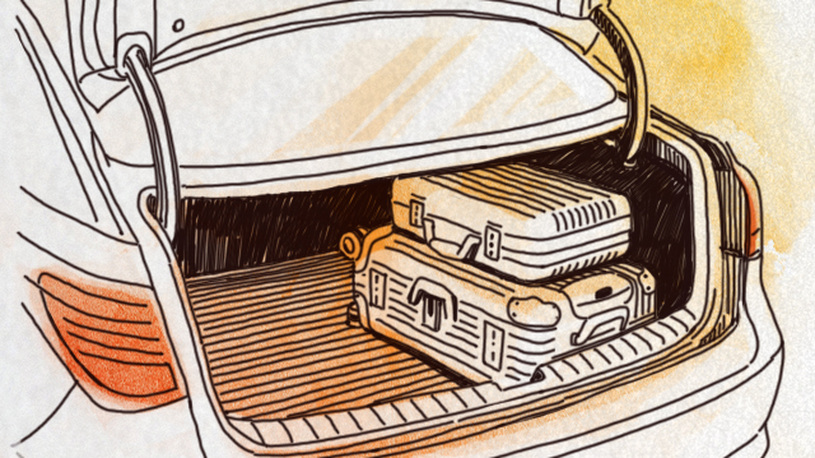
Condensation in the trunk
“In winter, I could skate in my trunk. Well, I never needed a spare wheel - I would have cut it down with an ice ax,” Alexander laughs. The trunk of the Kia Rio sedan was distinguished by poor ventilation, due to which condensate accumulated inside, freezing safely in the cold and provoking excess dampness in the warm season. And with the moisture that gradually accumulated in the niche of the spare wheel, some tried to fight in a very funny way - to cover the spare wheel with materials that absorb moisture well, from napkins to pads and even baby diapers. Fortunately, a more effective solution to the problem was found fairly quickly.
Normal air circulation, as it turned out, was hindered by sound insulation, with which the manufacturer overdid it a little - the edge of the layer of noise-insulating synthetic winterizer covered the ventilation grill. Accordingly, no drastic measures were required to solve this problem. "To refine the ventilation duct of the luggage compartment on the client's car, a piece of noise-insulating synthetic winterizer was removed, which increased the gap between the ventilation grill and the upholstery and improved air circulation," the dealer center says. However, the owners did not turn to dealers specifically with this problem so often, since it is quite simple to solve it on their own.
***
Of course, the owners of classmates-competitors can gloat and be in full confidence that they definitely made the right choice and bought the most reliable and trouble-free car. But there are no perfect cars - and the fact that your favorite model has not yet appeared in this section means only one thing: we just haven't got to it yet.




